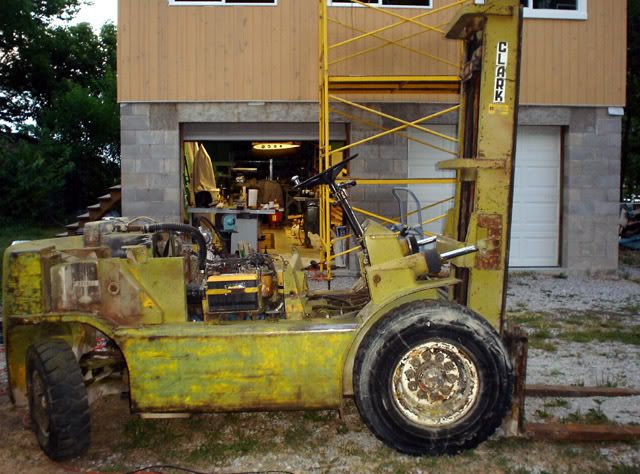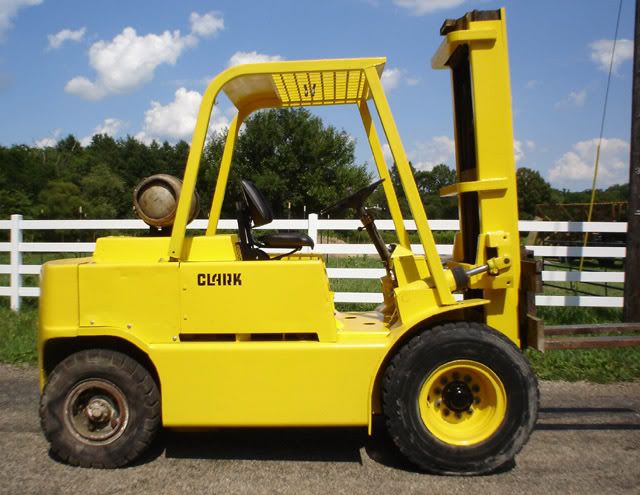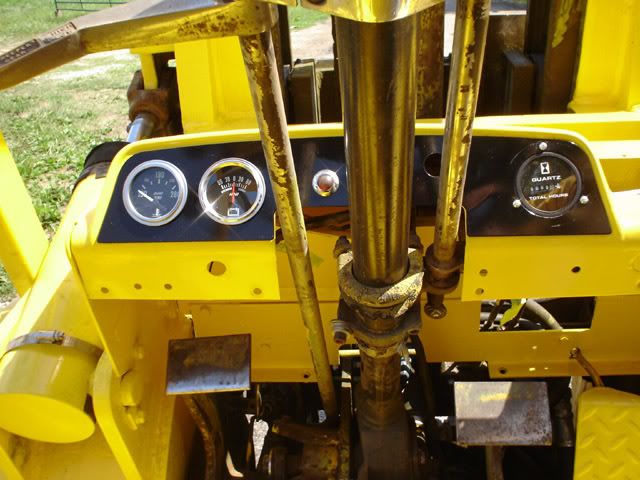Gauge
Aluminum
- Joined
- Mar 25, 2005
- Location
- Philadelphia
I am restoring a 1965 Towmotor Forklift and I want to give it a new paint job. I was hoping someone could recommend a good strong industrial paint.
As a matter of background....
Some of you may remember about 4 months ago I had a few posts regarding an old Towmotor LT 35 that I used to drive when I was a teenager. Well, shortly after that post I found a 1965 Towmotor 510P that a local dairy distributor was looking to get rid of for scrap. It was a one ton machine with air tires. My initial inspection found that the only fluid in it was engine oil and a little bit of hydraulic fluid, everything else was bone dry - axle, transmission, air cleaner, even the radiator. The good news at least was that it lived it's life indoors, so there was no rust anywhere. The shop foreman said it used to run, but one day stopped and managment didn't want to pump any money into it. Reluctantly, (and at the dismay of my wife), I brought it home.
It has a Continential flathead 162 cubic inch engine. I charged up the battery and did a compression check. To my surprise, it had 140 psi in each of the cylinders. I soon discovered that the lobe that rides the cam on the points broke off and because the points were always in the closed position, it had no spark. A trip to NAPA and a new set of points solved the problem and after a little TLC this thing runs great! I think this is a testament to how durable and strong they used to build these little machines. Even after years of abuse and neglect, everything still works! In fact, since I got it running, it's become the most used tool in my shop. I use it for everything.
Anyway, I am just thrilled by how useful this little machine is and that's the reason I want to give it a paint job and make it look pretty. I visited my local Caterpillar dealer, (which bought Towmotor in the 1960's), provided them with my model and serial numbers and asked them for a paint code, and they looked at me like I had six heads. They said they had NO CLUE what the paint color could be for a machine this old and basically laughed me away from the parts counter. I find this odd since to the best of my knowledge, all Towmotor forklifts were only painted one color.
Anyway, you guys have always been great to me and any help that you can offer in terms of paint color and / or a strong industrial paint would be greatly appreciated.
Thanks again for all your help. I promise to post pictures.
As a matter of background....
Some of you may remember about 4 months ago I had a few posts regarding an old Towmotor LT 35 that I used to drive when I was a teenager. Well, shortly after that post I found a 1965 Towmotor 510P that a local dairy distributor was looking to get rid of for scrap. It was a one ton machine with air tires. My initial inspection found that the only fluid in it was engine oil and a little bit of hydraulic fluid, everything else was bone dry - axle, transmission, air cleaner, even the radiator. The good news at least was that it lived it's life indoors, so there was no rust anywhere. The shop foreman said it used to run, but one day stopped and managment didn't want to pump any money into it. Reluctantly, (and at the dismay of my wife), I brought it home.
It has a Continential flathead 162 cubic inch engine. I charged up the battery and did a compression check. To my surprise, it had 140 psi in each of the cylinders. I soon discovered that the lobe that rides the cam on the points broke off and because the points were always in the closed position, it had no spark. A trip to NAPA and a new set of points solved the problem and after a little TLC this thing runs great! I think this is a testament to how durable and strong they used to build these little machines. Even after years of abuse and neglect, everything still works! In fact, since I got it running, it's become the most used tool in my shop. I use it for everything.
Anyway, I am just thrilled by how useful this little machine is and that's the reason I want to give it a paint job and make it look pretty. I visited my local Caterpillar dealer, (which bought Towmotor in the 1960's), provided them with my model and serial numbers and asked them for a paint code, and they looked at me like I had six heads. They said they had NO CLUE what the paint color could be for a machine this old and basically laughed me away from the parts counter. I find this odd since to the best of my knowledge, all Towmotor forklifts were only painted one color.
Anyway, you guys have always been great to me and any help that you can offer in terms of paint color and / or a strong industrial paint would be greatly appreciated.
Thanks again for all your help. I promise to post pictures.








